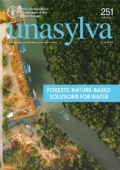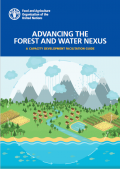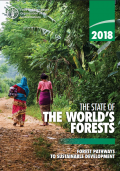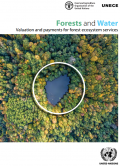FAO Publications
Water – drinkable, usable water – is likely to be one of the most limiting resources in the future, given the growing global population, the high water demand of most agricultural production systems, and the confounding effects of climate change. We need to manage water wisely – efficiently, cost-effectively and equitably – if we are to avoid the calamity of a lack of usable water supply. Forested watersheds provide an estimated 75 percent of the world’s accessible freshwater resources, on which more than half the Earth’s people depend for domestic, agricultural, industrial...
“Advancing the Forest and Water Nexus - A capacity development facilitation guide” is a module-based facilitation guide supporting capacity development in integrated forest-water management. The facilitation guide aims to (1) develop an understanding of forest-water interactions within local and broader contexts; (2) conceive specific activities and/or actions that take an understanding of forest-water interactions into account; and (3) support the design of a forest-water monitoring plan and system that can work for the local context. Check the tab capacity development for extra resources.
Forest and Water flyer
July 2019
July 2019
The publication of the flyer intends to disseminate the work of the Forest and Water Programme. It is cover the importance of integrated forest and water management and demonstrate the role of the Forest and Water Programme in this context, providing an overview on the vision, mission, goals and activities of the programme.
The State of the World’s Forests 2018 provides detailed analysis aimed at capturing the contribution of forests and trees to 28 targets relating to ten SDGs. Through thematic metrics bringing together available evidence from a wide range of sources, a clearer picture is emerging of the full impact that forests and trees have on many other crucial areas of development.
The objectives of this study are to further improve our understanding about the ways in which payments for ecosystem services schemes can be applied to forests, in particular focusing on forest’s hydrological functions for the mutual benefit of both humans and the environment. In addition, the study covers advances and challenges facing these schemes and provides practical guidance for policymakers and practitioners. This study contains the most comprehensive currently available database of case studies on water-related payment for forest ecosystem services schemes in the UNECE region.





